
Woburn Abbey, occupying the east of the village of Woburn, Bedfordshire, England, is a country house, the family seat of the Duke of Bedford. Although it is still a family home to the current duke, it is open on specified days to visitors, along with the diverse estate surrounding it, including the historic landscape gardens and deer park, as well as more recently added attractions including Woburn Safari Park, a miniature railway and a garden/visitor centre. It was built by William Russell, 1st Baron Russell of Thornhaugh.

Humphry Repton was the last great designer of the classic phase of the English landscape garden, often regarded as the successor to Capability Brown. His style is thought of as the precursor of the more intricate and eclectic styles of the 19th century. His first name is often incorrectly spelt "Humphrey".

(Henry) Robin Ian Russell, 14th Duke of Bedford was a British peer, stockbroker and animal conservationist. He became well known to the public by appearing in three series of the BBC reality television programme Country House. During his childhood he was styled by the courtesy title Lord Howland, one of his grandfather's lesser titles, and from 1953 and for most of his adult life was styled by the courtesy title Marquess of Tavistock, his father's senior subsidiary title, and as he survived his father by only 7+1⁄2 months, he himself held the dukedom for that short period during 2002–2003.

Tavistock is an ancient stannary and market town in West Devon, England. It is situated on the River Tavy, from which its name derives. At the 2011 census, the three electoral wards had a population of 13,028. The town traces its recorded history back to at least 961 when Tavistock Abbey, whose ruins lie in the centre of the town, was founded. Its most famous son is Sir Francis Drake.

Russell Square is a large garden square in Bloomsbury, in the London Borough of Camden, built predominantly by the firm of James Burton. It is near the University of London's main buildings and the British Museum. Almost exactly square, to the north is Woburn Place and to the south-east is Southampton Row. Russell Square tube station sits to the north-east.

Tavistock Square is a public square in Bloomsbury, in the London Borough of Camden near Euston Station.
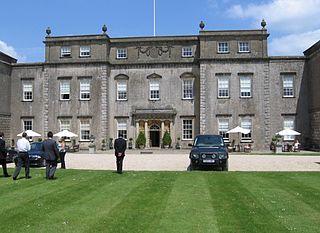
Ston Easton Park is an English country house built in the 18th century. It lies near the village of Ston Easton, Somerset. It is a Grade I listed building and the grounds are listed Grade II on the Register of Historic Parks and Gardens.

Tavistock Abbey, also known as the Abbey of Saint Mary and Saint Rumon, is a ruined Benedictine abbey in Tavistock, Devon. The Abbey was surrendered in 1539 during the Dissolution of the Monasteries. Nothing remains of the abbey except the refectory, two gateways and a porch. The abbey church, dedicated to Our Lady and St Rumon, was destroyed by Danish raiders in 997 and rebuilt under Lyfing, the second abbot. The church was further rebuilt in 1285 and the greater part of the abbey between 1457 and 1458.
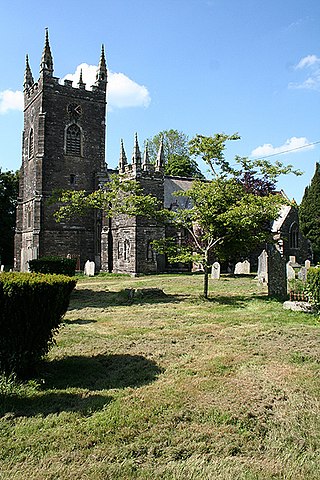
Werrington is a civil parish and former manor now in Cornwall, England, United Kingdom. Prior to boundary changes it straddled the Tamar and lay within the county of Devon. The portion on the west side was transferred to Cornwall by the abolition of Broadwoodwidger Rural District by the Local Government Commission for England in 1966. It is situated 1 mile (1.6 km) to the west of the Tamar, the traditional boundary between Devon and Cornwall, and 1 mile (1.6 km) north of Launceston.

Henry Clutton was an English architect and designer.

Sarsden is a village and civil parish about 3 miles (5 km) south of Chipping Norton, Oxfordshire. The 2001 Census recorded the parish population as 83. Since 2012 Sarsden has been part of the Churchill and Sarsden joint parish council area, sharing a parish council with the adjacent civil parish of Churchill.
Newells Preparatory School came to Lower Beeding, Sussex, in 1946. It has been at Handcross and known as Handcross Park School since 1968. It merged with Brighton College in 2011.

The Bedford Estate is an estate in central London owned by the Russell family, which holds the peerage title of Duke of Bedford. The estate was originally based in Covent Garden, then stretched to include Bloomsbury in 1669. The Covent Garden property was sold for £2 million in 1913 by Herbrand Russell, 11th Duke of Bedford, to the MP and land speculator Harry Mallaby-Deeley, who sold his option to the Beecham family for £250,000; the sale was finalised in 1918.
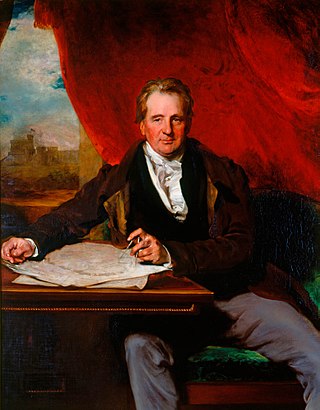
Sir Jeffry Wyatville was an English architect and garden designer. Born Jeffry Wyatt into an established dynasty of architects, in 1824 he was allowed by King George IV to change his surname to Wyatville. He is mainly remembered for making alterations and extensions to Chatsworth House and Windsor Castle.

Sheringham Hall is a Grade II* listed building which stands in the grounds of its park. The house is close to the village of Upper Sheringham in the English County of Norfolk in the United Kingdom. The hall was built on the instructions of Abbot and Charlotte Upcher who engaged the architect and landscape designer Humphry Repton and his son John Adey Repton to build the house and to present designs for the surrounding parkland. Humphry worked on the landscape and John Adey designed the hall. National Trust members and guests have no rights of access across the park and farmland surrounding Sheringham Hall. Access is solely at the discretion of the owners of George Youngs (Farms) Ltd which farms the Sheringham estate. George Youngs (Farms) Ltd is owned by Paul Doyle and Gergely Battha-Pajor who also own the long leasehold of Sheringham Hall.
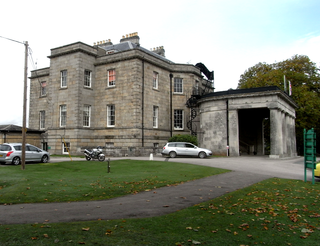
Stover is a historic estate in the parish of Teigngrace, about halfway between the towns of Newton Abbot and Bovey Tracey in South Devon, England. It was bought by James Templer (1722–1782) in 1765 and passed through three generations of that family before being bought by Edward St Maur, 11th Duke of Somerset in 1829.
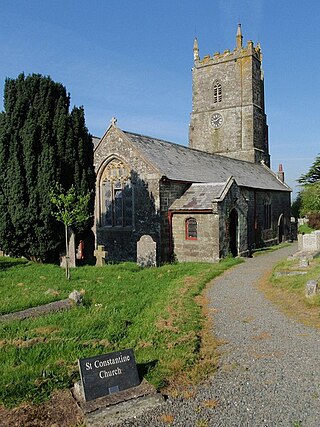
Milton Abbot is a village, parish, and former manor in Devon, 6 miles (9.7 km) north-west of Tavistock, Devon, and 6 miles (9.7 km) south-east of Launceston, Cornwall.

The British Medical Association War Memorial, officially the War Memorial at British Medical Association House, Tavistock Square, Bloomsbury, London, commemorates men and women of the medical professions from the British Empire and Commonwealth who died in the Second World War. The memorial was commissioned by the British Medical Association and designed by the sculptor James Woodford. Unveiled in 1954 by Sir John McNee, then President of the BMA, and dedicated by Geoffrey Fisher, the Archbishop of Canterbury, it became a Grade II* listed structure in 1998.

Mamhead House, Mamhead, Devon, is a country house dating from 1827. Its origins are older but the present building was constructed for Robert William Newman, an Exeter merchant, in 1827–1833 by Anthony Salvin. The house is Grade I listed as Dawlish College, its function at the time of listing. The parkland is listed at Grade II*.

Tavistock Town Hall is a municipal building in Bedford Square, Tavistock, Devon, England. The structure, which remains the main venue for civic events in the town, is a Grade II listed building.
























